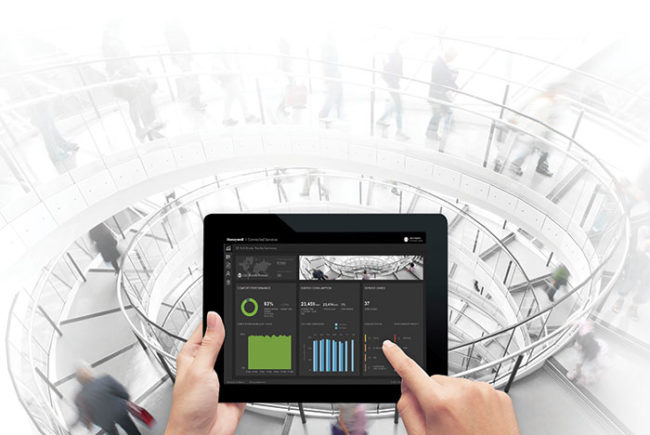Any building performance improvements must first begin with an honest assessment of the status quo. And according to a recent survey from Honeywell, hospitals are the most realistic compared with other sectors when evaluating how well their facilities are performing.
The Honeywell Smart Building Score surveyed nearly 500 buildings across seven major U.S. cities from seven sectors: airports, government offices, hospitals, education, hotels, retail, high-rise residential and private offices. The report measured performance across three asset groups — environmental sustainability, safety and productivity — and out of a possible 100 points, hospitals clocked in at No. 3 with 45 points, behind airports (50) and government offices (46).
However, when it came to the “perception vs. reality” assessment, hospitals took the top position as having the most realistic opinion of their buildings’ smart score, perceiving that they had an average of a mere 6 points more than their actual score. Other categories inflated their scores by 10 to 34 points.
Jim Lesinski, strategic marketing director, Honeywell Connected Buildings, says the health care sector’s realistic assessment of itself is “likely a reflection of the conditions — and world — in which they operate. They’re under constant regulatory pressures and must ensure they’re meeting guidelines such as the Joint Commission standards. Similarly, the importance of positive patient experiences and outcomes plays out through measures like the HCAHPS survey, which evaluates patients’ perspectives on their experiences and has a direct impact on hospital funding.”
Lesinski also notes that the “do more with less” culture permeating health care as a result of changing reimbursement models may contribute to hospitals being “keenly aware of the ins and outs of how their building operates and affects patient experience, and if they’re getting as much out of their building as they can.”
That may explain why hospitals scored more than any other building type in productivity. The category measured systems including monitoring and control systems for features such as lighting and indoor air; people, vehicle and cargo movement management; communication and data infrastructure, both in wired and wireless support; and emergency power systems. The survey found that integration and connectivity regarding all types of data are key aspects hospitals focus on to keep patients safe.
“Because hospitals typically comprise multiple buildings, systems integration and data connectivity is hugely important,” Lesinski explains. “It’s a reflection of the number of systems they house — often spread across wide areas, such as campus environments — and the amount of data processed on a daily basis.”
Lesinski says connected systems give hospitals a real-time awareness, allowing them to consider data from the physical environment that can positively or negatively affect patient care.
After productivity, safety was hospitals’ second-highest performance category. The survey found that hospitals center safety investments around access control, fire safety and emergency response.
“Building systems that control access to surgery units and imaging resources play an important role in the safety of patients and health care workers alike,” Lesinski says. “Systems sometimes taken for granted, like fire monitoring, must appropriately detect and not generate false alarms when evacuation is complex. The bottom line is that it's critically important for health care facilities to have the right building safety systems in place to enable personnel to monitor and control environments 24 hours a day, every day of the year. These systems provide necessary protection and information about unfolding risks, and enable personnel to quickly and effectively mitigate issues should they arise.”
Going green is the lowest-scoring category among the hospital field, although it did come in second among the various sectors (41 points). Only airports scored higher with 49 points. The survey found that hospitals focus their sustainability efforts around energy consumption, such as flexible cooling and heating systems, and efficient appliances and fixtures. Other green factors, such as efficient use of natural resources (27 points), scored much lower among hospitals, leaving room for improvement. Having information like this on hand could help an already realistic field make progress in their goals to build smarter facilities.
“The primary benefit of [hospitals’] realistic perception is that one is aware of their potential, and what they may not be doing yet, but could in the future,” Lesinski says.





